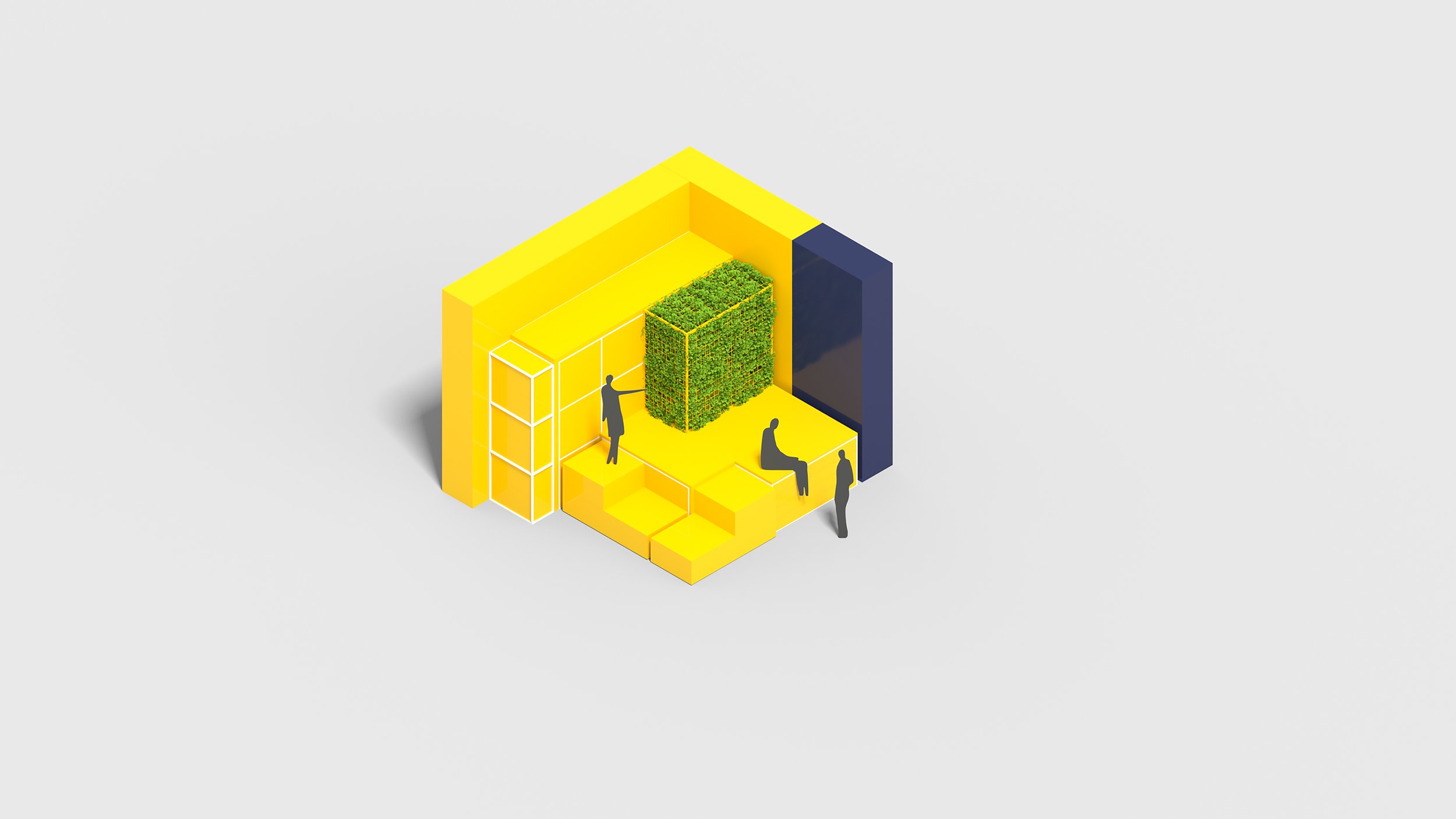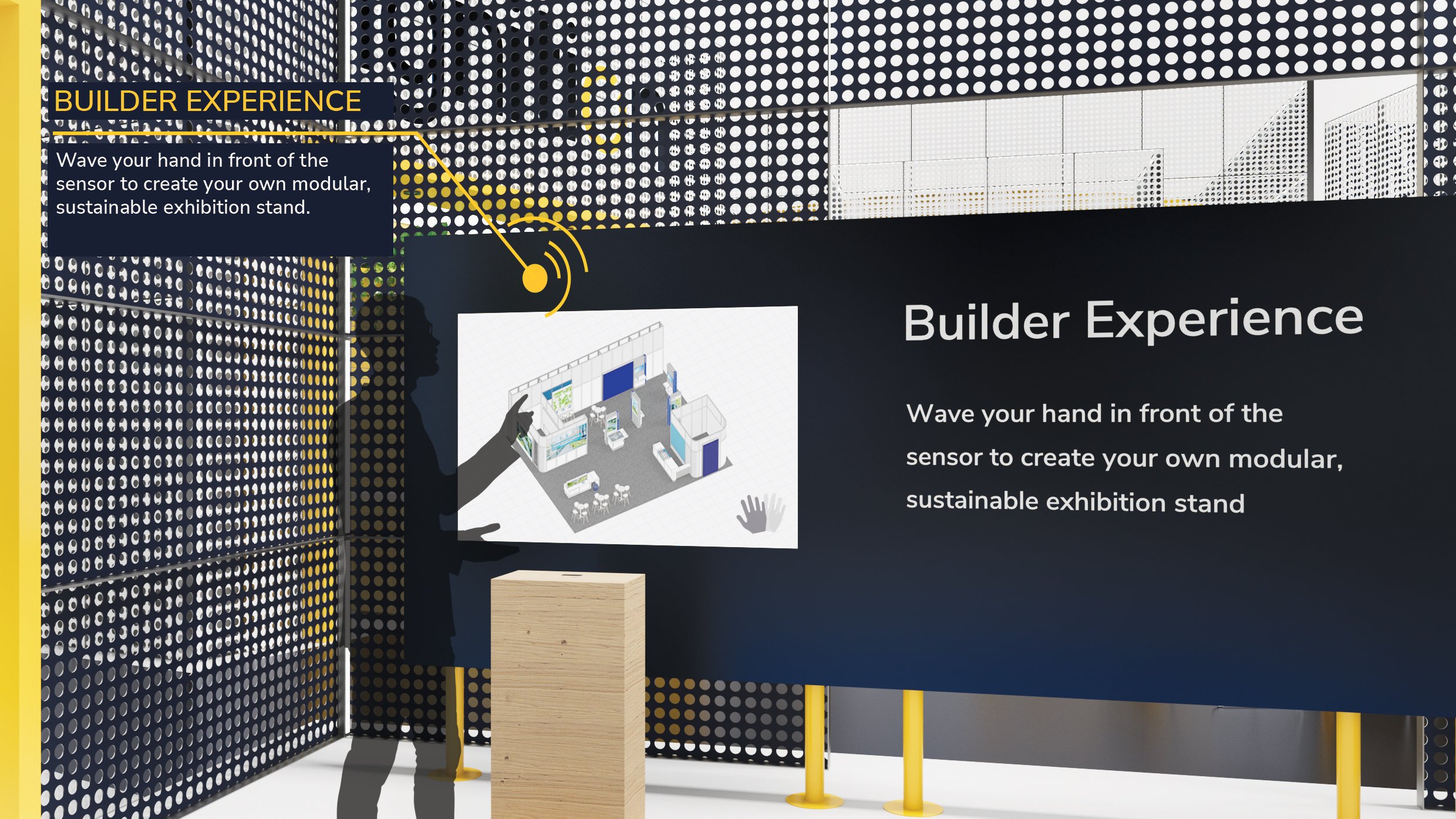Sam Rowe: Futureproofing exhibitions | Part TWO
Futureproofing Exhibition & Event Design
First published by Exhibition News
Post-Covid and Brexit, in a business environment combining a growing appetite for sustainability with rising energy costs, supply chain uncertainty and the mind-bending possibilities of the metaverse, how can we best futureproof exhibitions and events?
As CEO of a company that successfully pivoted during Covid-19 to create a new virtual offer and which remains the only exhibition and events company to hold The Queen’s Award for Enterprise in Sustainable Development, Ignition’s Sam Rowe is in a good position to ponder the possibilities.
Did you miss Part 1 on Technology? If so, click here to read it first.
Part 2 - Safety and Sustainability in Post-Covid Exhibits
Sam Rowe, CEO, Ignition DG
Following our investigation into future virtual, phygital and metaverse exhibit possibilities, this article will look at factors affecting the future of physical exhibits, with post-pandemic perceptions certain to have a long-term effect here.
These centre mainly on two areas:
safety and security - overcoming residual visitor anxieties
the growing sense of urgency around sustainability.
Safety First
Let’s look at the issues around safety first. We’ve already been asked by some clients for stand designs that anticipate another wave of the virus - or even a different virus – so we’re designing stands that help regulate visitor numbers, with controlled access/egress, whilst ensuring designs remain open and welcoming. We’re incorporating the very latest anti-viral technology too and adapting on-booth content for touch-free or gesture-based interactions, with content carefully-paced to prevent bottlenecks. Not everyone feels comfortable using a touch screen either - even with the clearest reassurances - making gesture technology a sound short-medium term option.
Clients are still asking for transparency within panels and wall segments, especially where visitors move round corners or across intersections, to take away any sense of the unknown, whilst sought-after surface materials are either anti-bacterial or anti-viral, with moisture-, bacteria- and mould-resistant finishes able to help prevent the accumulation of pathogens. All iPads, touchscreens, models and products meanwhile need to be treatable with antiviral surface coatings, whilst UV lights located around high contact areas can be activated overnight to ensure surfaces are fully sanitised.
Sustainability
When it comes to sustainability, things are moving forward at pace we’re delighted to report. Historically, we’ve experienced many instances when sustainability was little more than a tick-box for procurement departments. Now, more switched-on businesses are asking designers and suppliers for serious (SBTi-based) proof of environmental sustainability. ‘Beware greenwashing!’ is the clear message.
Globally, approximately 32,000 exhibitions take place each year, featuring 4.5 million exhibiting companies and attracting over 303 million visitors. That’s a lot of potential wastage. As we know, it’s the associated cost that’s been the greatest barrier to change historically. It’s a burden that has to be shared realistically between buyer and seller. On the client side, businesses and procurement departments now have a corporate responsibility not to go for the lowest bidder - as so many still do - and accept that the cost associated with not doing business sustainably ultimately comes at the expense of the environment.
Exhibition stands need to be designed with re-use and repurposing in mind. For clients who exhibit at several shows a year, a reconfigurable kit with a lifespan of 5-10 years can make a significant impact on reducing carbon footprints. For those wanting a modular, re-usable exhibition kit - or for whom it’s less relevant for one-off shows or events - we offer a ‘made for metamorphosis’ approach, where components can be adapted for different uses, rather than going to landfill. Think event or merchandising backdrop, pop-up shop or garden shed!
Investing in displays that fit into smaller vehicles helps too by lowering fuel consumption and transport costs. Minimising a display’s volumetric capacity can include using semi-rigid, rollable or tension-fabric graphics, rolled into space-saving carry bags and graphics drums. If clients want rigid graphics, a display can be created that pieces together smaller graphic panels. Lighting also offers myriad energy-efficient alternatives, from ever-reputable light-emitting diodes (LEDs), to eco halogens and compact fluorescent lightbulbs (CFLs). Powerful and engaging presentations, showreels and interactive experiences can also be achieved using sophisticated tech that’s kinder to the environment too. Flat screens, interactive surfaces, and smart technology are all making regular appearances at expos across the globe with energy-efficient options.
As exhibitors increasingly require environmentally-friendly graphic substrates, availability has followed suit too, including honeycomb board, for example - a rigid substrate made from 100% recyclable material. Recycled cardboards and sustainably-sourced wood are other potential candidates for a ‘green’ stand substrate. Printing is another area ripe for improvement. Traditional processes often use petroleum-based, or other solvent-based inks, which release volatile organic compounds (VOCs) when drying. These are greenhouse gases and a definite contributor to global warming. Offset printing alone releases around 500,000 tonnes of VOCs into the atmosphere annually. We encourage clients to use printing processes that eliminate solvents or to use waterless ink to eliminate the release of VOCs. Where we can’t re-use or recycle, we repurpose, using leftover carpet, for example, to line crates to ship exhibits.
None of us can read the future completely, but the essence of futureproofing is about reading the present tense both explicitly and implicitly. What do we think the exhibitions and events of the future will be? Hybrid, meta, safe, clean, modular and green. Bring them on!
Thank you for reading.
We’d love to hear your thoughts. Post a comment below or if you would like to find out more, please do get in touch.
A 'Made for Metamorphosis' exhibition stand
Stands should be able to be reconfigured for future use
The future is both modular and sustainable




